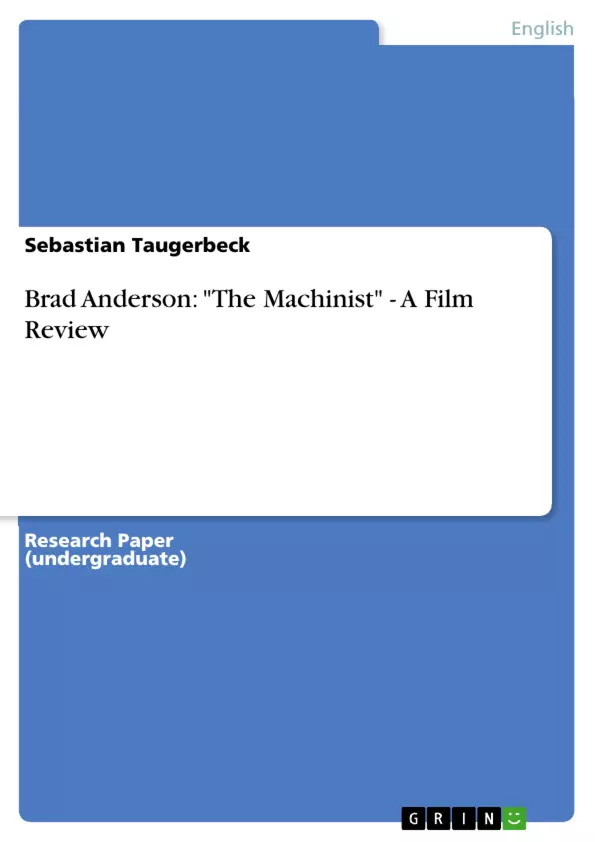Brad Anderson, an American director and scriptwriter, proves with his fifth film “The Machinist” that neither a big budget nor the financial supports of a glamorous Hollywood studio have got to be essential conditions for producing a fine piece of art. After he had finished his work on the screenplay, he presented it all the usual Hollywood studios, in the hope that he could find a financially strong sponsor for his ambitious project. Even though his scriptwriter Scott Kosar did a great job, no studio or producer wants to finance or support the film because of its overwhelming dark mood and twisted plot. After they had searched for several years and were turned down by every approached studio, they decided to shot the entire film on locations in Barcelona, Spain. Even though those financial problems led to an austerity budget, nothing could hold them back to produce this masterpiece of narration work.
Trevor Reznick (Christian Bale) is captured in a nightmare from which he can’t escape: He hasn’t slept in a year, without knowing the cause of his sleeplessness. Due to his insomnia he had lost one third of his original weight and is nothing but skin and bone. His only attachment figures are the prostitute Stevie (Jennifer Jason Leigh) and the waitress Marie (Aitana Sánchez-Gijòn), who works in an airport cafe. He works as a mechanist in a dirty factory under the lead of a misanthropic assistant foreman. Because of his appearance and his strange behaviour he has lost all amicable contact to his workmates. But then he meets Ivan (John Sharian) who claims to be the new worker on the welding bench. During a routine maintenance Trevor is distracted by Ivan and causes a horrible accident whereby his mate Miller (Michael Ironside) loses his left arm. He tries to explain his carelessness but nobody has ever heard of Ivan. After that, a sequence of strange calamities progresses and Trevor thinks that everyone has conspired against him.
- Quote paper
- Sebastian Taugerbeck (Author), 2010, Brad Anderson: "The Machinist" - A Film Review, Munich, GRIN Verlag, https://www.grin.com/document/144875



